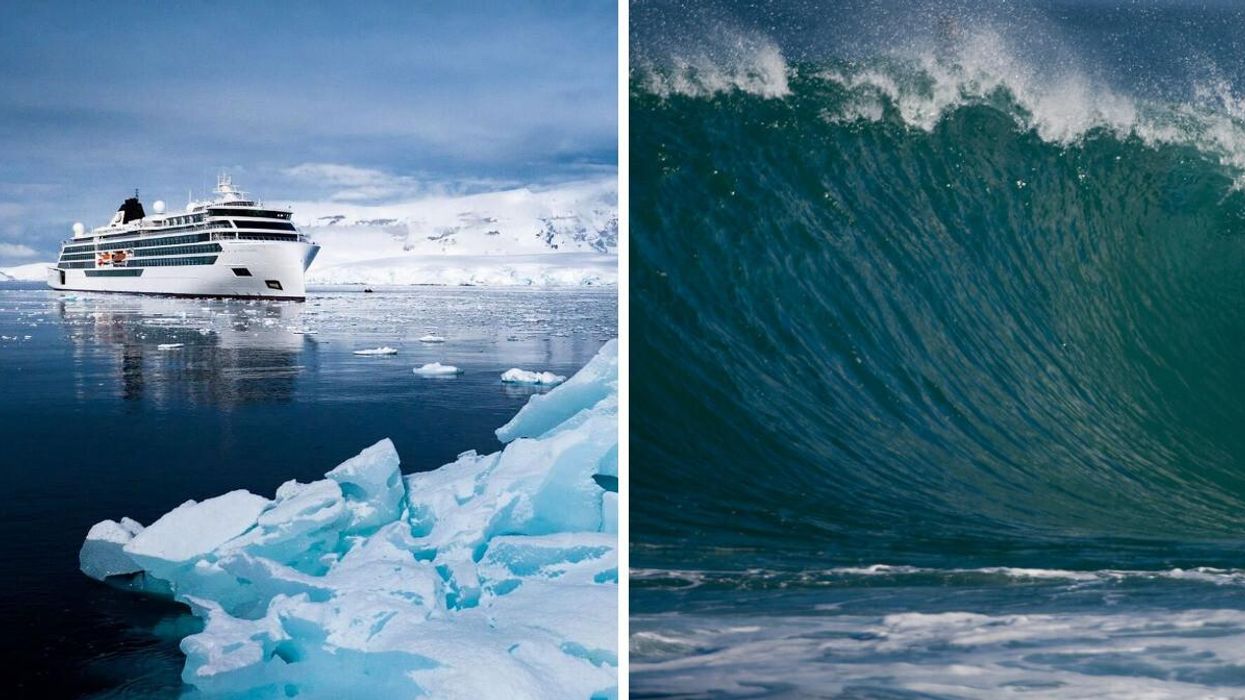A Rogue Wave Smashed Into A Viking Cruise Ship & Killed A Tourist On An Antarctic Voyage
"We wondered if we hit an iceberg," a witness said.

The Viking Polaris cruise ship in Antarctica. Right: A large wave.
One person was killed and four others were injured after a massive wave crashed into a cruise ship near Antarctica.
The cruise ship Viking Polaris was heading south toward Antarctic waters early Wednesday when a rogue wave smashed into it off the coast of Argentina, shattering windows along the side of the vessel.
"We wondered if we hit an iceberg," Suzie Gooding, a U.S. tourist who was on the ship, told WRAL News. "Everything was fine until the rogue wave hit, and it was just sudden. Shocking," she said.
"We didn't know if we should get our gear ready for abandoning ship."
\u201cAT 10P ON FOX50/@WRAL NEWS AT 11\n\nFROM VACATION TO NIGHTMARE. \n\nA person died and several others were hurt after a rogue wave hit this cruise ship (peep the broken windows). \n\nHear from a Durham woman who\u2019s STILL ABOARD the ship and the terrifying moments she witnessed. #wral\u201d— Aaron Thomas (@Aaron Thomas) 1669947018
The Viking cruise company described it as a "rogue wave incident" in a statement to the AFP. The company's spokesperson also confirmed that four people were injured and one was killed.
"It is with great sadness that we confirmed a guest passed away following the incident," the spokesperson said. "We have notified the guest's family and shared our deepest sympathies."
The other four passengers "sustained non-life threatening injuries" and were treated on the ship.
The Viking Polaris is practically brand new and was launched earlier this year, according to the company's website. It's designed to carry 378 guests and a crew of 256.
Viking is investigating the rogue wave incident and the damage to the ship, which was docked in Argentina on Friday.
What is a rogue wave?
A rogue wave is a wave that's at least twice the size of surrounding waves, according to the U.S. National Oceanic and Atmospheric Administration (NOAA). These waves are often unpredictable, unexpected and can even come from directions other than the way the wind is blowing.
NOAA adds that rogue waves often look like "walls of water" coming at you, and are extremely steep.
Their causes are still not fully understood.
This article's right-hand cover image was used for illustrative purposes only.
